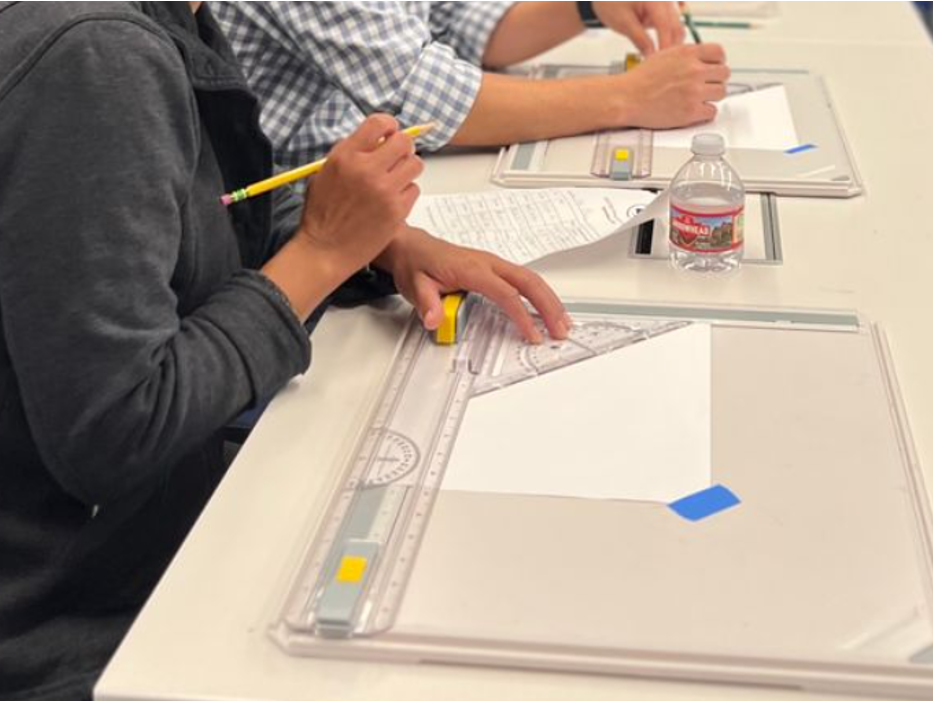“I was trying to conjoin these two things, but as if they are different heights, like this one is on the ground but this one is floating above. Does it look that way?”
9th Graders in their year-long Integrated Arts & Human-Centered Design class are beginning with skill-building around technical drawing, by hand! Using a drafting tray that holds layers of tracing paper with rulers, straight edges, and rails built-in, and tools like a triangle, a parallel bar, and adjustable angle, each student has been challenged to draw multiple cuboids intersecting. Design Director Richard Ong guided students with this directive: “Part of this project is about the composition, and the ability to depict two objects with accurate perspective that are intersecting. The second part is technical. If these two lines are supposed to be parallel, are they actually? Can you use these tools to make the lines really precisely perpendicular and parallel, no matter your composition?”
Students started by drawing single cuboids using the tools—learning to flip, rotate, and slide their bar and triangle to create perfectly perpendicular and parallel lines at many angles. Using layers of tracing paper with different 3D shapes, students then model different ways to make them intersect before deciding on a composition. The next challenge is to create a “subtraction” from the composite. Students showed me that, in addition to rules of perspective and line drawing, they need to just kind of “make their eyes fuzzy” and imagine different ways the shapes might be in relation. “Can you see how this object is sitting under this one? And, [without moving the arrangement] can you also kind of see how it could be on top of it instead? It’s all about the lines you leave in—and out.”
It’s all about the lines you leave in—and out.
In addition to practicing measurement, composition, and use of the drafting tools, students are building skills to translate what they can imagine through drawing to their viewer. With imperfection and repeated mistakes, they develop a keener awareness of the ways line, perspective, and angle communicate design specifications. As they move to hand-building and digital fabrication, their drafting skills will serve them in appreciating how other tools, including woodworking and software add to the repertoire of designers and builders, as well as the lasting benefits of drawing for communication.

